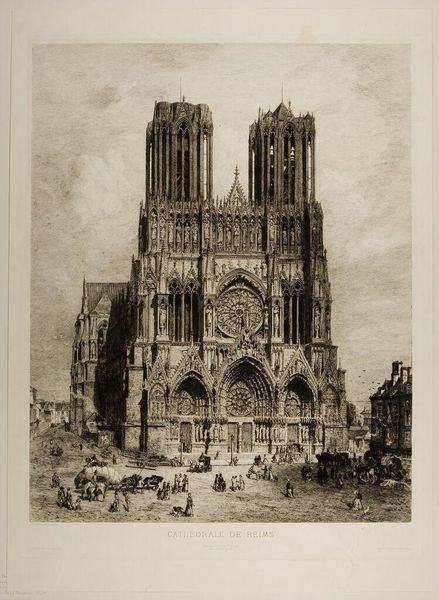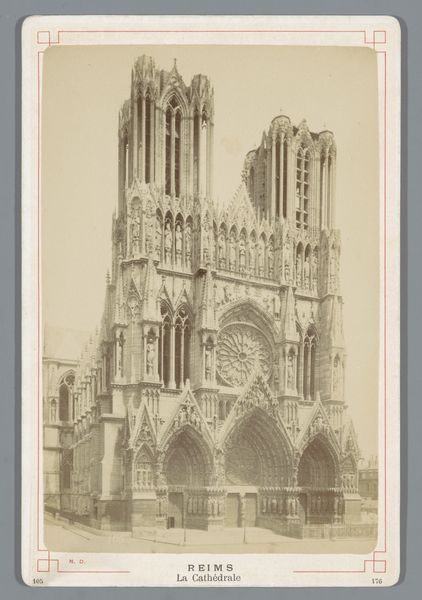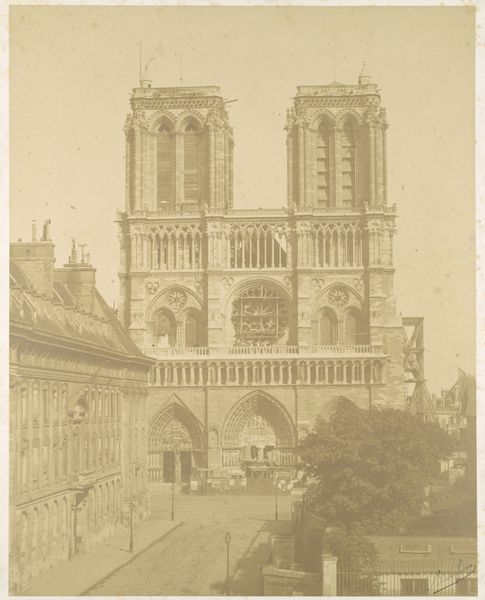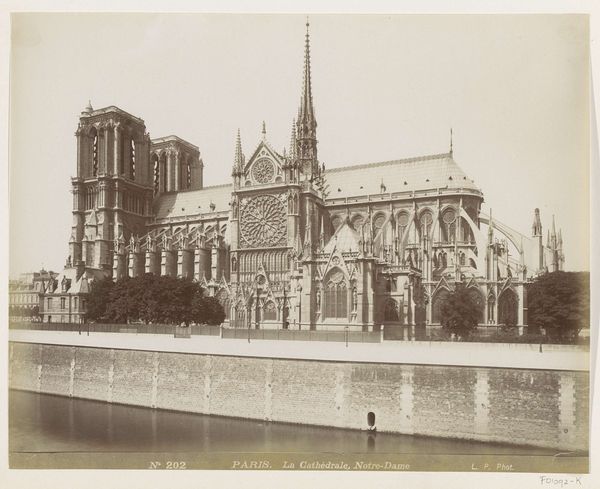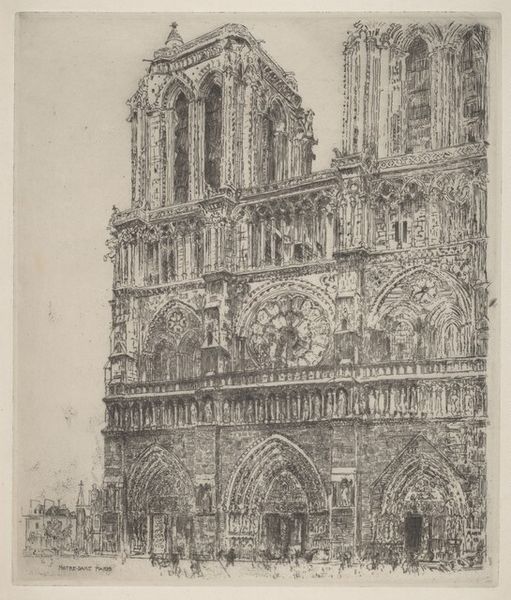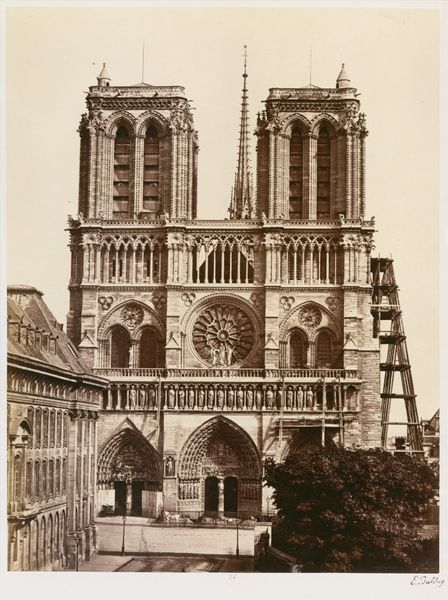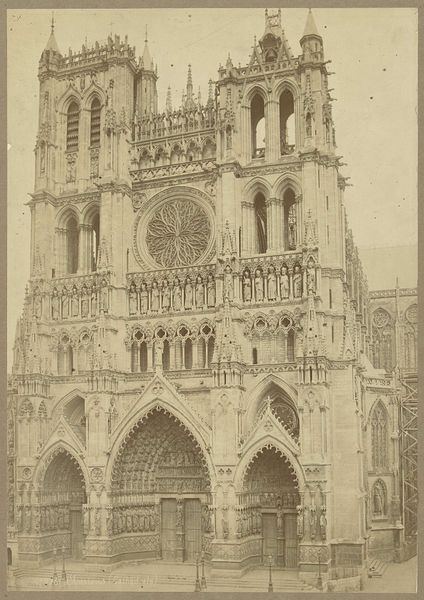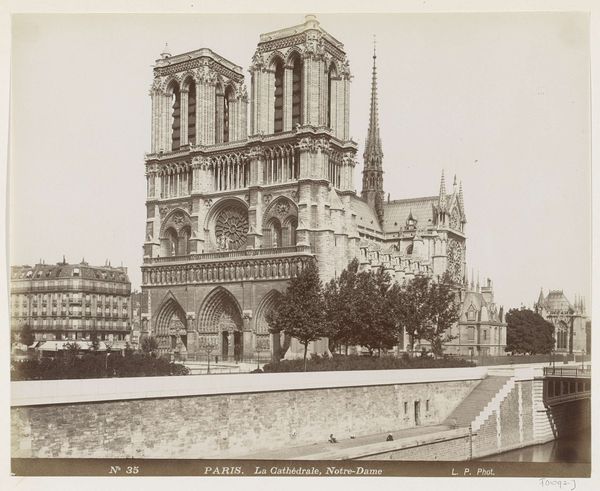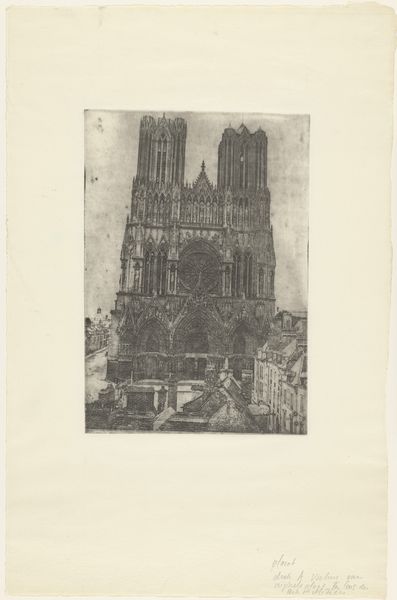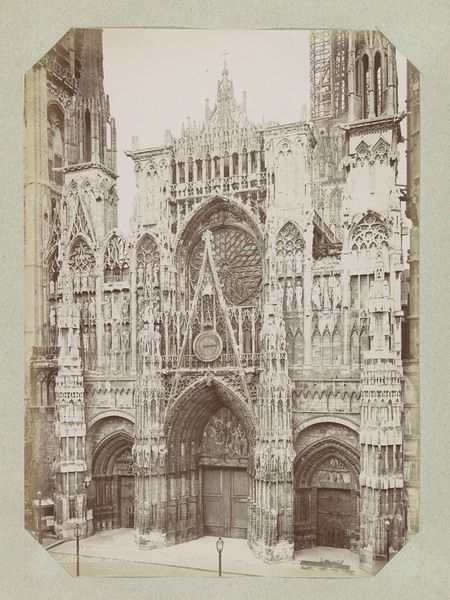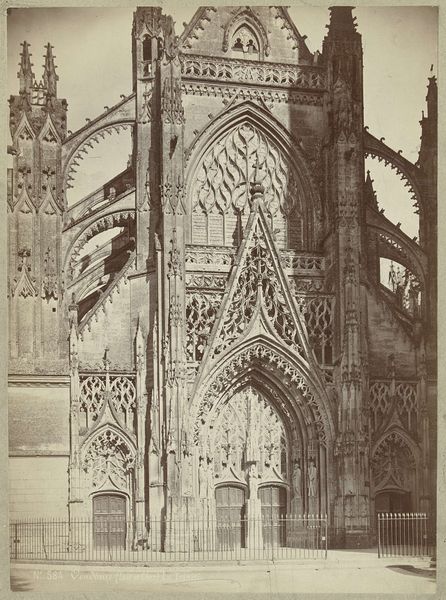
Dimensions: height 373 mm, width 278 mm
Copyright: Rijks Museum: Open Domain
Méderic Mieusement captured the west facade of Reims Cathedral with photography. In 19th century France, photography played a crucial role in documenting and disseminating images of architectural landmarks. As an art form, photography was still in its infancy. The development of photography coincided with a growing interest in preserving and celebrating national heritage. The image creates meaning through its attention to detail and the way it captures the grandeur of the cathedral's Gothic architecture. Built over centuries, Reims Cathedral held immense historical and symbolic importance. It was the site of coronations for French monarchs, linking the church with national identity. Architectural photography emerged within specific institutional contexts. Publications and archives helped to categorize buildings like this as significant cultural artifacts. By studying photographs like this alongside historical documents and architectural plans, we can understand how cultural institutions shaped perceptions of national identity and architectural heritage.
Comments
No comments
Be the first to comment and join the conversation on the ultimate creative platform.
